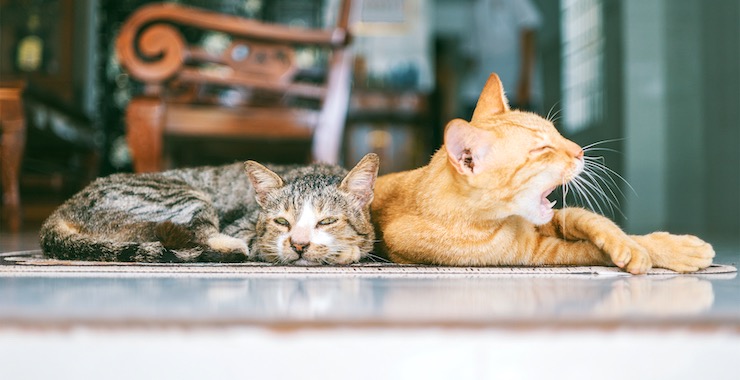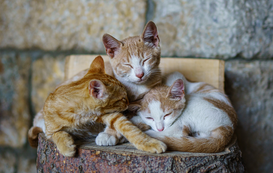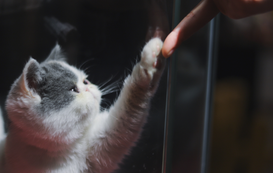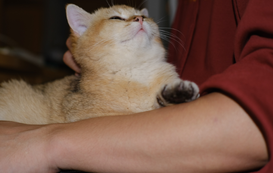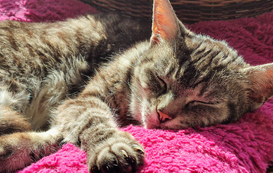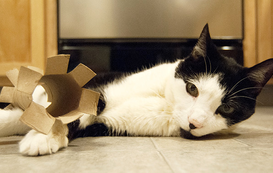Popular posts
How to Accommodate for an Additional Cat in the Home
While cats tend to hunt alone more often than not, they prefer to spend time with another feline. It's easy to think that cats are loners, that they do not like mingling with other kittens, and would prefer to keep to themselves. However, it's important to note that many cats do well with and perhaps even prefer having a furry friend to play, cuddle, and interact with. Of course, only you know the wants and needs of your fur baby. So, if you're thinking about adding another cat to your family, this article will give you the tools to navigate that journey.
Before Bringing Another Cat Home
Before bringing Fluffy a playmate, be sure you're doing it for the right reasons. It's very important for you to know the backstory of your cat as well as the potential incoming cat. For example, if you've always had two cats and one has recently passed away, you might consider allowing for grieving time before bringing a new cat into your home.
If you really think your cat needs a playmate, then you need to be sure and assess how much energy and tolerance he or she has. Would your senior cat rather nap than play? If so, it may be best to consider adopting an older cat. Does your young cat love other cats and have a ton of energy? Then another juvenile cat may make a better kitty companion. You also need to take into consideration that your cat may in fact be a loner. It is necessary that you really understand what your cat realistically needs before changing their entire lifestyle by adding another cat into the mix. My cat loves almost every single person he's ever met, but he also hates every other animal in the world. He does not handle my mom's dogs well, and when her cats were alive, he attacked each one. True story. So for us, no matter how much I may want another cat, it's just not an option.
Advantages of Having a Multi-Cat Household
They can help entertain each other.
Most of the time, cats are home alone and engage in little physical or mental stimulation when their parents are away. CatTV and squeaky mouse toys can only hold their attention for so long. Having more than one cat helps to prevent boredom which can lead to behavioral issues or depression. Two cats will be able to entertain each other by cuddling, playing, and sharing the same space.
They teach each other life lessons-aka how to "cat".
Everything in a cat's world is a target for pouncing, stalking, and playing. As much as we would like to, humans can't be our cat's 24/7 playmate; thus the need for another feline. They can amuse, distract, and entertain each other. The cats can learn valuable cat etiquette from one another, such as hunting and social skills. Additionally, playing helps them build coordination and develop muscular motor function.
Adopting more than one cat helps save lives.
When you're thinking about adding another cat to your household, remember that you're saving a life! With so many animal shelters hitting capacity, it often leaves no other options than to euthanize the animals that have been there the longest. This can be avoided by providing a healthy and happy home to those cats that need it the most.
So You're Bringing Home a New Cat
If you've decided that it makes sense to add another cat into your home, be sure to take the proper steps to accommodate this new addition. Cats usually require weeks or even months to adjust to lifestyle and environmental changes since they are highly territorial. Therefore, when meeting other pets, the first impression becomes a significant factor - meaning they require a steady introduction to prevent fights and enable them to learn to coexist.
Create a sanctuary space for the new cat.
Make sure the new cat is confined in one room with its bed, litter box, water, and food for at least a week to reduce rivalry with the resident cat(s). This is a great time to create a cozy cat space just for them.
Introduce them to each other gradually.
Start by feeding them together but in different rooms separated by a closed door. Each cat should have his or her own bowl placed at a fair distance from their side of the door. Doing this allows them to interact through feeding while still having their own safe space. Eventually, gradually move the bowls closer to the door. Once the kitties are calm and comfortable while eating directly across from each other, you can open the door for a few seconds or minutes to allow them to see each other while eating. After they're comfortable eating together with the door open, then you can finally let them meet face to face. Don't worry if they hiss or ignore each other, just be on the look-out if they start getting overly aggressive.
If a fight happens, reduce their rivalry by separating and distracting.
If the cats are getting a little feisty with each other, speak to them calmly. If that doesn't work, create a distraction. A great distraction tactic: make a loud noise towards them to secure their separation and lure them into their rooms. Be sure to give them time to calm down. Over time, this pattern will help reduce their aggression and rivalry which can help lead them to a bonded and healthy relationship.
Let the new cat explore their new environment.
After the new cat becomes comfortable in his or her sanctuary space (this includes using the litter box and eating well), you should confine the resident cat to a private room and let the new cat discover the rest of the household. The purpose is to enable the new cat to smell the scent of the resident cat, which can help encourage them to bond more quickly-or at least understand each other's boundaries when it comes to sharing spaces.
Allow for joint playtime.
Once you get to a common ground where the kitties seem to be interested in each other without fighting, the goal is to get them into a common space to play. Jackson Galaxy, renowned Cat Behaviorist, suggests using the Eat, Love, Play method. Jackson advises:
You're bringing one cat into a room where there's another cat who is already engaged in a high-value, fully engrossing activity. And your challenge is to keep them preoccupied for as long as possible through treats, positive reinforcement, play, and... well... love-without that staredown/throwdown happening1.
The Eat, Love, Play method, by Jackson Galaxy1:
Start with One Cat: Begin by playing with only one cat in the room. Make sure they are engaged, and keep them moving... either with treats or a toy.
Bring in the Other Cat: Casually have your partner bring the other cat into the room and immediately engage them. In a perfect world, you would lead the cat into the space with whatever is their favorite food or toy.
Keep the "Rhythm" Going: The most important component when you bring the cats together is establishing and maintaining a rhythm of play once they hit the room. This is where your partner's help is invaluable, because he or she can work to focus the other cat on the session while you do the same with yours.
End the Session: The session will end in one of two ways: either the cats will end it, or the humans will. It goes without saying that you would prefer the latter every time1.
Galaxy says once this ritual ends naturally and not forced by the humans, you're likely in the clear when it comes to your cats cohabitating.
Sitters on Meowtel often appreciate detailed instructions to help keep your cats on their schedules and routines. Independent sitters on the platform are ready to help your fur babies stay happy while you are away. If your cats are still new to one another when you're preparing for your trip, consider outlining these details to help your sitter understand the current dynamic. Providing this information can help the sitter continue your path to fur-bestie success.
1Galaxy, Jackson (2018). Do's and Don'ts of Introducing Cats. Retrieved from https://www.jacksongalaxy.com/blog/the-dos-and-donts-of-introducing-cats/
Photo by FOX from Pexels

